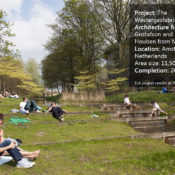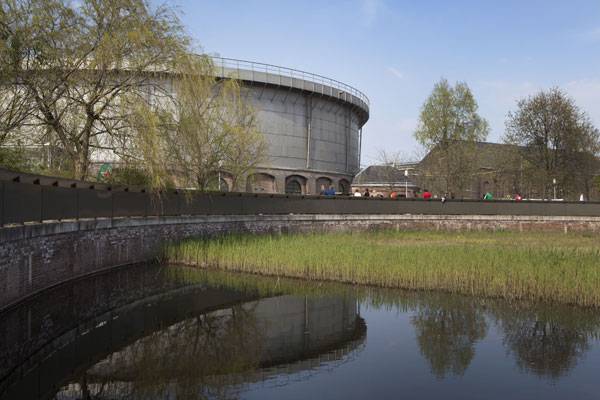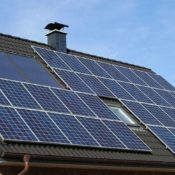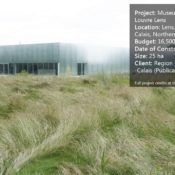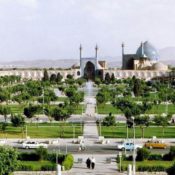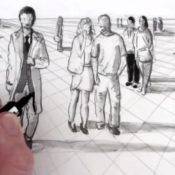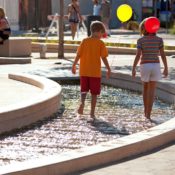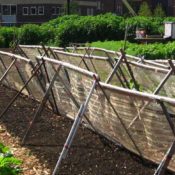Author: Land8: Landscape Architects Network
How People can Save the Landscape and Make it Social
Article by Maria Giovanna Drago – The Westergasfabriek Terrain, by Kathryn Gustafson and Francine Houben from Mecanoo, in Amsterdam, The Netherlands. The Westergasfabriek Terrain by Kathryn Gustafson and Francine Houben from Mecanoo, Amsterdam, the Netherlands. The Westergasfabriek was the largest factory which produced coal gas in the Netherlands during the nineteenth century. It’s just outside the centre of Amsterdam and towers over the landscape with its red and yellowish bricks in the Neo-Renaissance style of the time. It used to provide energy for street lighting; that is why it’s strategically located between the railway, the waterways and the major streets. With the end of the industrialization boom in 1967, its activity terminated, giving way to emptiness and abandonment.
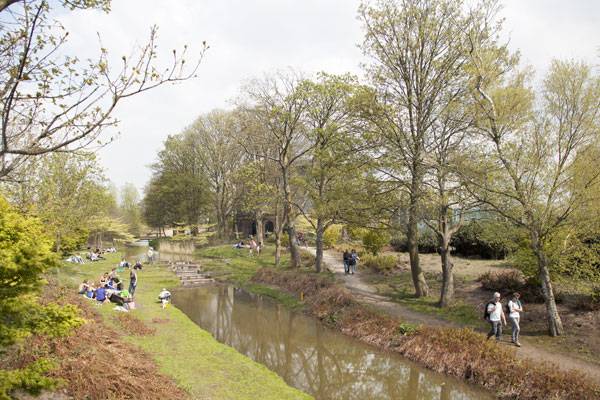
The Westergasfabriek. Photo courtesy of Mecanoo
The Westergasfabriek Terrain
Culture Will Save the World
Cleaning up the whole area was hard. The soil was deeply polluted because of tar, cyanide, asbestos, and mineral oil storage. It took more years than expected to make the area safe. In 1992 the district council entrusted the area to a cultural expert to prevent the buildings from being squatted. The Holland Festival took place there and it was very successful. By that time a few adventurous types started hanging out over there, they were mostly young creatives and local artists which were not seeing a plant anymore, but a quite attractive opportunity for their performances and exhibitions. So when the ‘Temporary Use Project Leader’ came up with the possibility to rent the places for cultural purposes the entrepreneurs didn’t want to miss the chance.
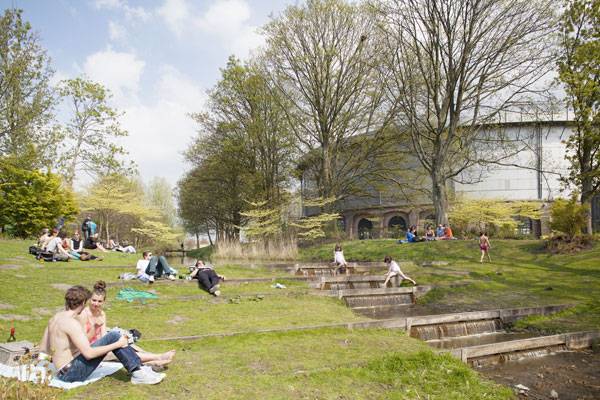
The Westergasfabriek. Photo courtesy of Mecanoo
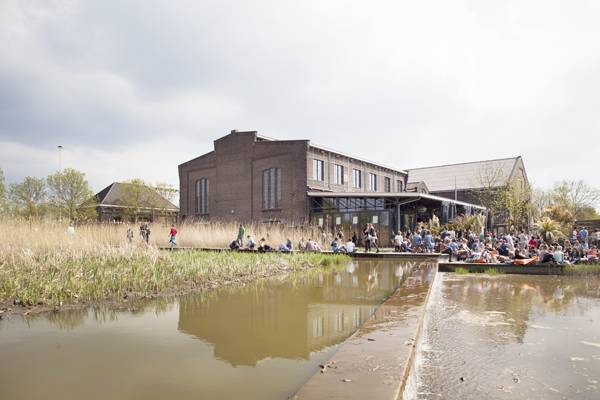
The Westergasfabriek. Photo courtesy of Mecanoo
The Competition
The project bears the signature of two amazing designers; architect Kathryn Gustafson and Francine Houben of Mecanoo. The selective process was intense since the city council had invited twelve landscape firms to present a preliminary masterplan as a very first step, then five of them were selected for the second phase. Gustafson and Houben won the competition in 1998 as they caught the cultural vocation of the area and matched the new people’s needs and points of view with the old industrial pre-existence.
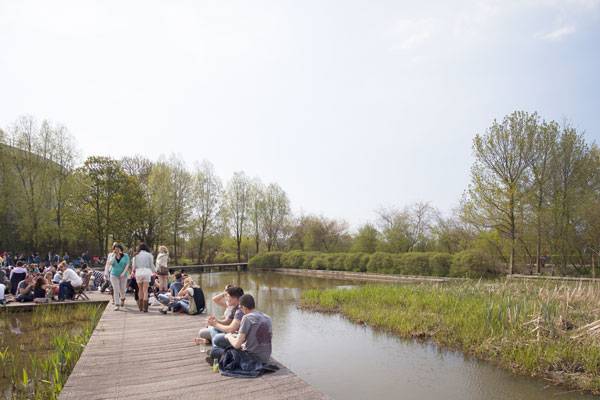
The Westergasfabriek. Photo courtesy of Mecanoo
The Winning Project
The park extends longitudinally from east to west, overlooking the city with many of its historic buildings. There are only thirteen of the originals left and they are protected for their architectural and historic value. A narrow channel separates the city from the park, but three bridges connect them after all; the outer two are driveways while the central one is a contemporarily-designed footbridge.
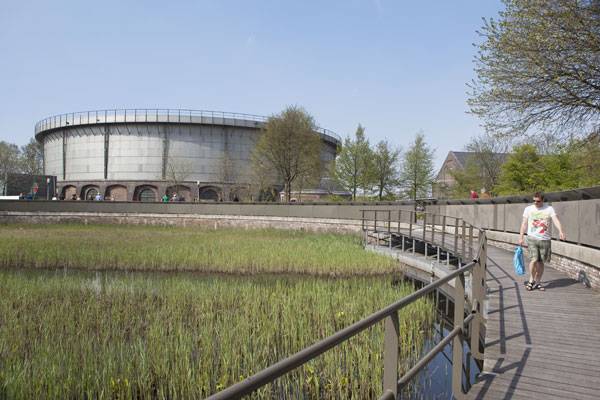
The Westergasfabriek. Photo courtesy of Mecanoo
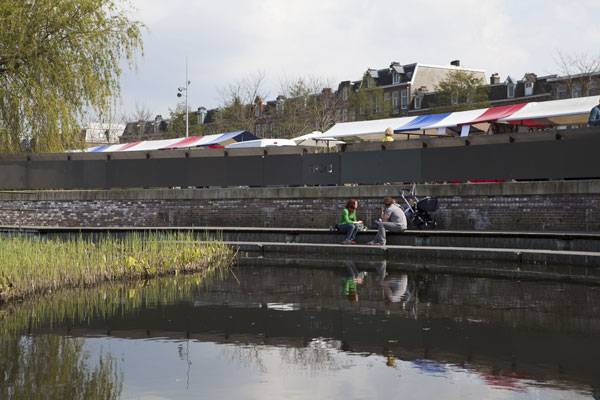
The Westergasfabriek. Photo courtesy of Mecanoo
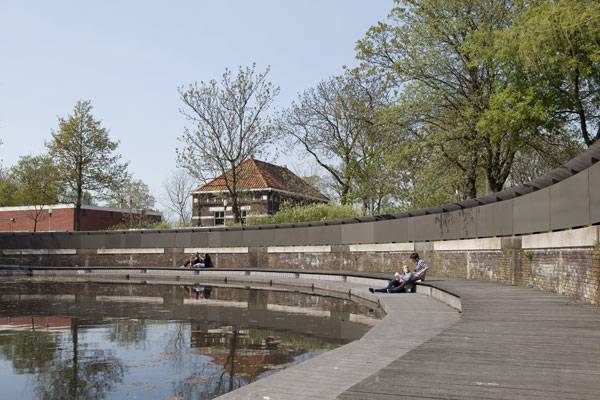
The Westergasfabriek. Photo courtesy of Mecanoo
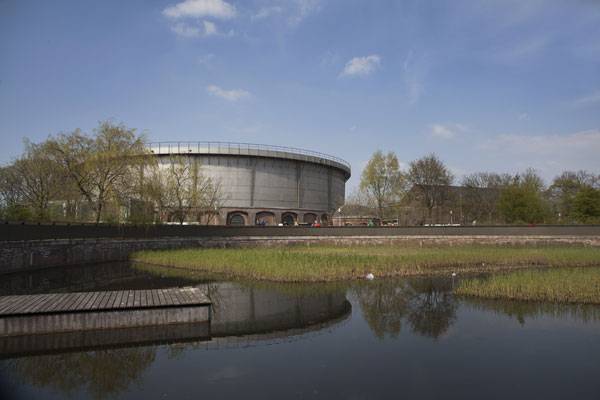
The Westergasfabriek. Photo courtesy of Mecanoo
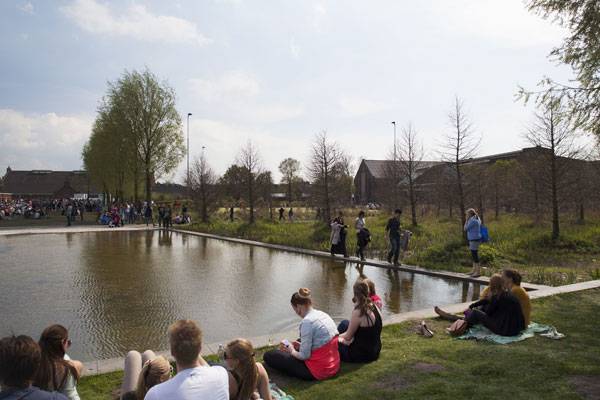
The Westergasfabriek. Photo courtesy of Mecanoo
Full Project Credits For The Westergasfabriek Terrain :
Program: Transformation of the former Westergasfabriek terrain in a cultural park, with re-development of 8,000 m² industrial buildings and 3,500 m² new development Project: Herinrichting Westergasfabriekterrein Winnend ontwerp meervoudige opdracht Scope: Transformation of the former Westergasfabriek Terrain in a cultural park Location: Amsterdam, The Netherlands Area size: 11,500 m² Design: 1997-2000 Execution: 2000-2001 Client: Stadsdeel Westerpark, Amsterdam; Projectgroep Westergasfabriek; MAB B.V., Den Haag Management consultant: MAB b.v, The Hague Structural engineer: ABT b.v., Delft Mechanical engineer: Techniplan adviseurs b.v., Rotterdam Team: Kathryn Gustafson i.s.m. Mecanoo architekten bv Recommended Reading:
- Becoming an Urban Planner: A Guide to Careers in Planning and Urban Design by Michael Bayer
- Sustainable Urbanism: Urban Design With Nature by Douglas Farrs
- eBooks by Landscape Architects Network
Article by Maria Giovanna Drago
Green Solutions May End Up Saving You Money
We take a look at green solutions that may indeed end up saving you money, so you can spend it on what really matters.
Green Solutions
Solar Revolution
Solar panels are more affordable than they’ve ever been. The key is utilizing them to their fullest ability. A single solar panel doesn’t give a lot of energy. But if it’s hooked into a source of energy storage, suddenly it becomes exceptionally effective. All you really need is a good-sized car battery. If you can sequence several car batteries together, you can increase your storage capacity such that one panel may see to a single individual’s needs for a twenty-four hour period. If you can get a large enough energy storage station, relatively few panels could provide the electricity needs for an entire operational wing of a business. Solar energy isn’t the only way in which “green” technology is rapidly reshaping the architectural landscape; but it is one of the most easy to understand. Following, several additional ways of increasing sustainability while decreasing expenses will be explored. Clouds Of Green Have you looked into cloud computing technology? This is a great way to consolidate resources, save money, and decrease your carbon footprint. Fully transitioning to the cloud removes the need for an on-site server array. This reduces your energy costs, your maintenance costs, and your upgrade expenses. Any server will require an upgrade over time. According to Moore’s law, technology doubles at an exponential rate. While this may not be a continual, absolute rate of expansion, it is definitely something whose effect still forces businesses into a regular upgrade every several years or so. The cloud allows you to get around this. Cloud options also have backup and data recovery built-in, and allow for a warm reboot. This allows systems to regain their functionality after a crash in minutes rather than hours, curtailing unnecessary downtime and ensuring profitable operations.
The Cool Roof
A “cool” roof has several different meanings. Firstly, colors used are “cool” colors—that is to say: colors that have been specifically designed to reflect not only the sun’s heat, but hidden spectrums of light like ultraviolet radiation. Secondly, this reflective nature actually ends up keeping the rest of the building rather cool. According to Fidelity Steel, “In the Pacific Northwest, a cool colored roof limits the need to cool a prefab metal building during the day by 15-25%.” Imagine cutting the costs of air conditioning as much as 25%. If you were paying a hundred dollars a month for this, you’ve instantly saved $300 for the year. Larger operations stand to save much more in this way. But prefabricated steel buildings have an even greater advantage than the cool roof—especially those structures that are curved such that their appearance is that of a half-cylinder planted in the ground. Solar panels can be installed that follow the arc of the sun across the sky, maximizing energy input. By using solar panels and a “cool roof” technique, you can decrease costs involved in maintaining your building, cooling your building, and energizing your building. Additionally, this is all done in a green, sustainable way which doesn’t harm the environment or your bottom line.
A Cord of Three Strands
The cool roof technique combined with solar energy and the cloud will substantively reduce operational costs. An even more exciting advantage becomes visible when you realize that these innovative technological breakthroughs are available to individual citizens as well as big-ticket organizations—and the savings still remain.
Green Solutions That Are Financially Lucrative
The green transition is finally becoming financially lucrative, which is the most necessary component in substantively decreasing negative environmental impact across the globe. It’s getting to the point where avoiding the green transition will actually cost more money in the long run.  Author Bio Kevin Bennett Title: SEO Marketeer Kevin is an SEO marketeer with OutreachMama and Youth Noise who designs value-rich content aimed at increasing clientele for expanding businesses. Networking, building partnerships, and providing quality products with shareable value make this possible. He’s an author (Amphibian and The Thief and the Sacrifice to his credit) whose professional writing follows business trends in technology, marketing, SEO application, and much more. Recommended Reading:
Author Bio Kevin Bennett Title: SEO Marketeer Kevin is an SEO marketeer with OutreachMama and Youth Noise who designs value-rich content aimed at increasing clientele for expanding businesses. Networking, building partnerships, and providing quality products with shareable value make this possible. He’s an author (Amphibian and The Thief and the Sacrifice to his credit) whose professional writing follows business trends in technology, marketing, SEO application, and much more. Recommended Reading:
- Becoming an Urban Planner: A Guide to Careers in Planning and Urban Design by Michael Bayer
- Sustainable Urbanism: Urban Design With Nature by Douglas Farrs
- eBooks by Landscape Architects Network
Article by Caitlyn Bell Featured image: Licensed under CC0 Public Domain. Image via Pixabay – Source. Image in article: Licensed under CC0 Public Domain. Image via Pixabay – Source.
Museum Park Louvre Lens Shows us The Potential of Coal Mines
Article by Cristina Conciatu – Museum Park Louvre Lens by Mosbach Paysagistes, Lens (Pas-de-Calais), France In the following we explore the Museum Park Louvre Lens, a landscape park which resulted from modern design combined with traces of mining history. An immense work of art of 25 ha surrounds Louvre Lens Museum in Pas-de-Calais, France. A landscaped extension with no walls: a place for culture, animation and popular gathering, which combines modern design with traces of mining history. It is, with no doubt, a poetic destination for those who are passionate about landscape architecture, and we would like to tell you why.

Museum Park Louvre Lens. Photo courtesy of Mosbach Paysagistes
Museum Park Louvre Lens
The museum is an important attraction, as it has many visitors annually. But the Park is also an appealing place, a destination in itself, that complements the Museum’s character and graciousness, by successfully bringing together history, art, architecture and landscape.
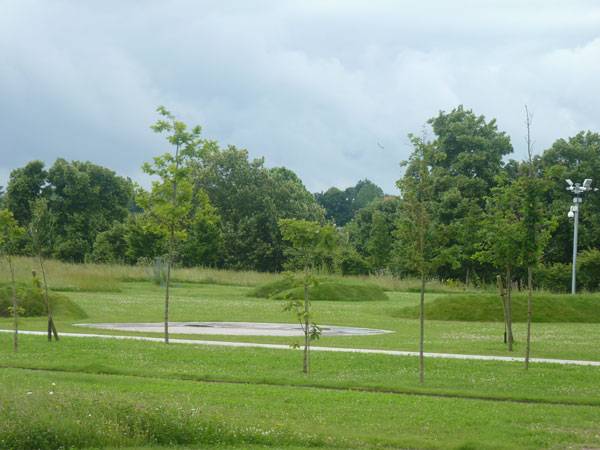
Museum Park Louvre Lens. Photo courtesy of Mosbach Paysagistes
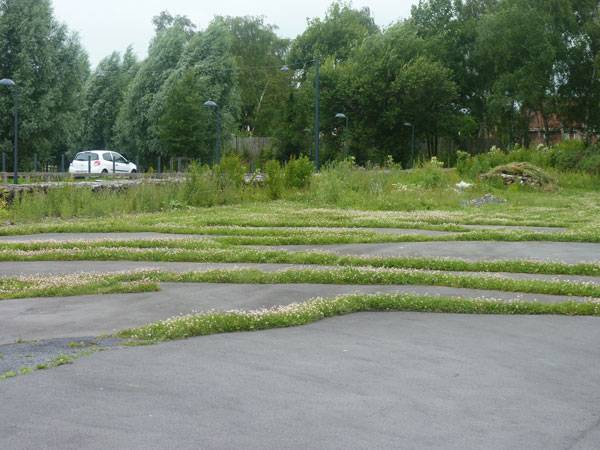
Museum Park Louvre Lens. Photo courtesy of Mosbach Paysagistes
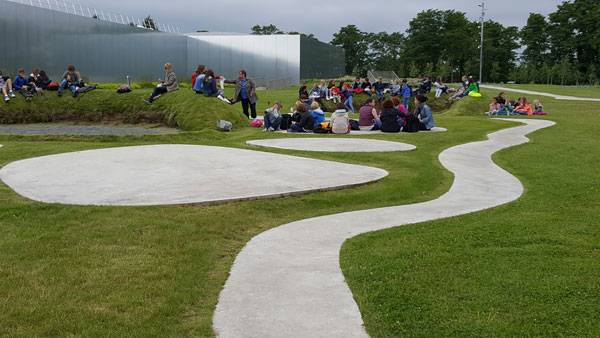
Museum Park Louvre Lens. Photo courtesy of Mosbach Paysagistes
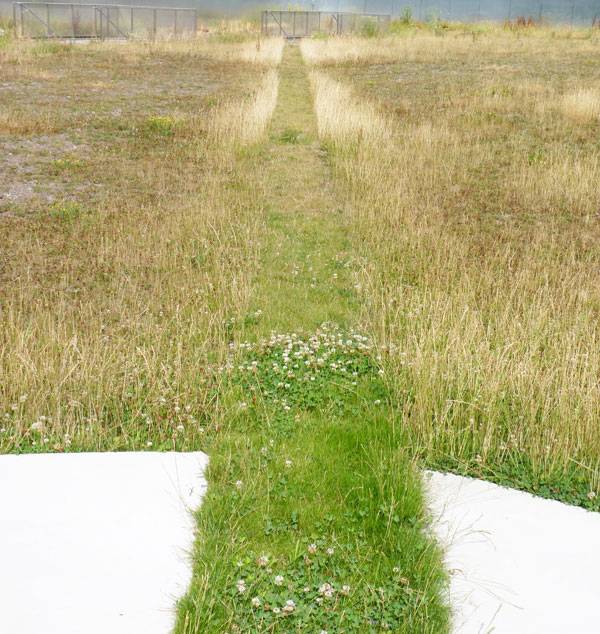
Museum Park Louvre Lens. Photo courtesy of Mosbach Paysagistes
But How, Exactly, Does The Park Summon History?
The surface area of the park is a metaphor shaped by the cartography of hidden underground resources. Some of the rider seams (the tracks used for transporting materials) are now represented as pathways, which take you on a journey throughout the entire site (east to west), that evokes the past in the most subtle manner. The historical entrance and the mine shaft have also been preserved and therefore integrated as key reference elements in the design of the park.
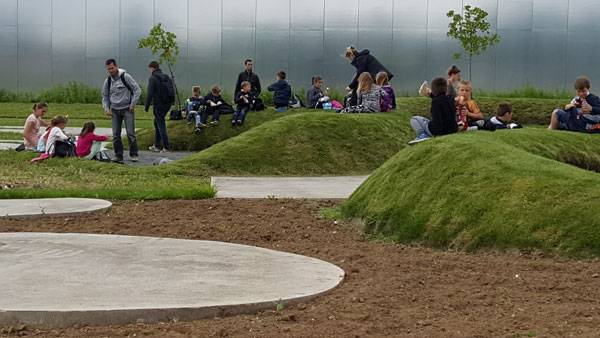
Museum Park Louvre Lens. Photo courtesy of Mosbach Paysagistes
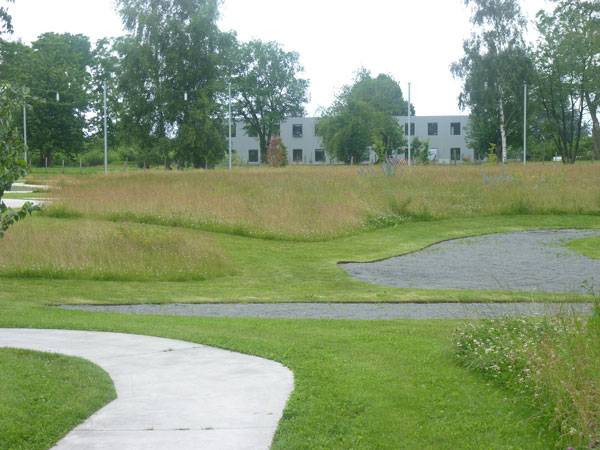
Museum Park Louvre Lens. Photo courtesy of Mosbach Paysagistes
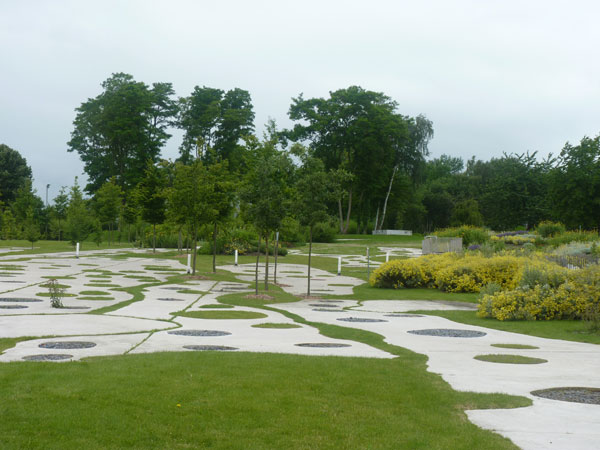
Museum Park Louvre Lens. Photo courtesy of Mosbach Paysagistes
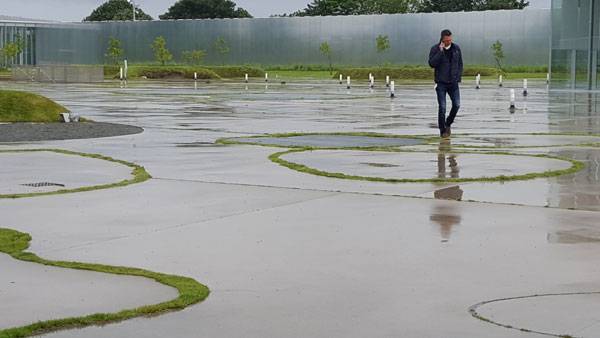
Museum Park Louvre Lens. Photo courtesy of Mosbach Paysagistes
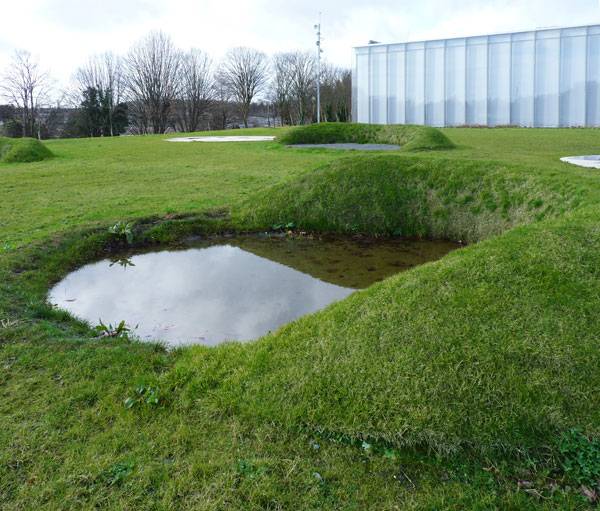
Museum Park Louvre Lens. Photo courtesy of Mosbach Paysagistes
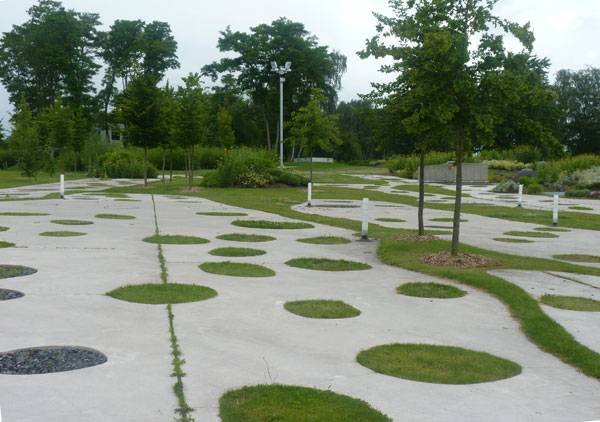
Museum Park Louvre Lens. Photo courtesy of Mosbach Paysagistes
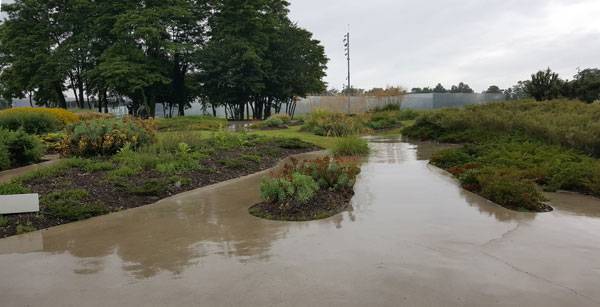
Museum Park Louvre Lens. Photo courtesy of Mosbach Paysagistes
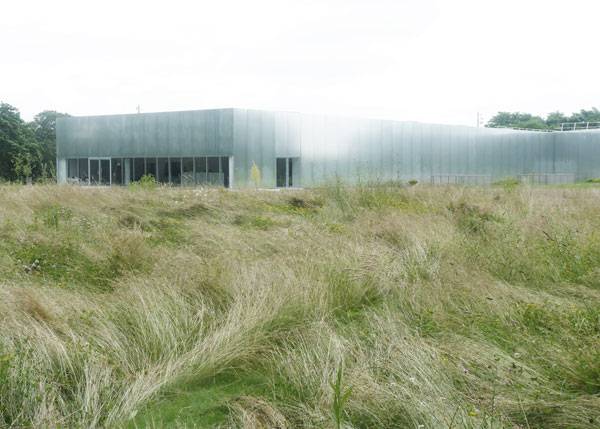
Museum Park Louvre Lens. Photo courtesy of Mosbach Paysagistes
Full Project Credits For Project Name: Museum Park Louvre Lens
Project Name: Museum Park Louvre Lens Location: Lens, Pas-de-Calais, Northern France Budget: 16,500,000 € Date of Construction: 2013 Size: 25 ha Awards: Rosa Barba Finalist 2016 Client: Region North Pas-de-Calais (Pública) Recommended Reading:
- Becoming an Urban Planner: A Guide to Careers in Planning and Urban Design by Michael Bayer
- Sustainable Urbanism: Urban Design With Nature by Douglas Farrs
- eBooks by Landscape Architects Network
Article by Cristina Conciatu
Create a Jaw-dropping Atmosphere With These Exterior Lighting Ideas
In this article, we explore exterior lighting ideas to help you transform your outdoor space and make it a multi-layered experience. If you are someone like me, you really enjoy the outdoors. I mean, by day, you can have the warm sunshine on your back and the soothing wind refreshing your senses. However when the night starts to set in, the garden seem as though it’s turning into a dark, uninviting area like those places your mother used to tell you to stay away from when you were younger. It doesn’t have to be this way. You can easily turn your night garden from a sleepy-hollow to an uplifting, hip and cosy area that your friends and family will want to hang out. By the end of this post, you will start arranging mid-week barbecues and weekend get-togethers to show off your new chillout zone.
Exterior Lighting Ideas
Build a Fire Pit
There’s something about the light from a fire that attracts companionship. The soft light and warmth that is emitted from the fire is a great option to add to your garden. Expect stories to be shared, jokes to be told and friendships to be bonded. There are several fire pit designs that you can opt for. After installing the fire pit, be sure to add seating arrangements around the exterior. The colours and shadows from the fire pit should create a warm, inviting ambiance.
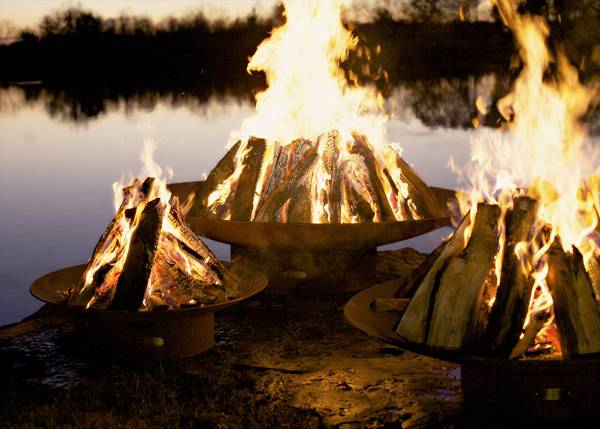
From the Asia series. Credit: Fire Pit Art
Reflect Light Off Your Trees, Gardens and Walls
It sounds simple, but it is so effective. Reflective lighting is an amazing way to light up your garden’s exterior. Consider investing in outdoor LED lights for the garden that are powerful enough to illuminate a bright light (ideally, as close as possible to sunlight) off the garden’s walls, trees or garden beds. The lighting ambiance should be bright enough to provide an inviting social setting.
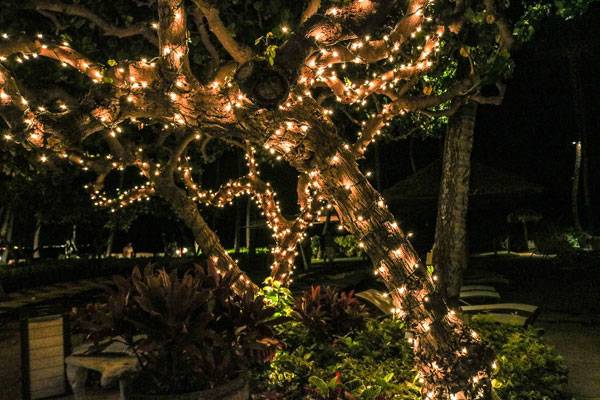
Exterior Lighting Design. Licensed under CC0 Public Domain, image via Pixabay – source.
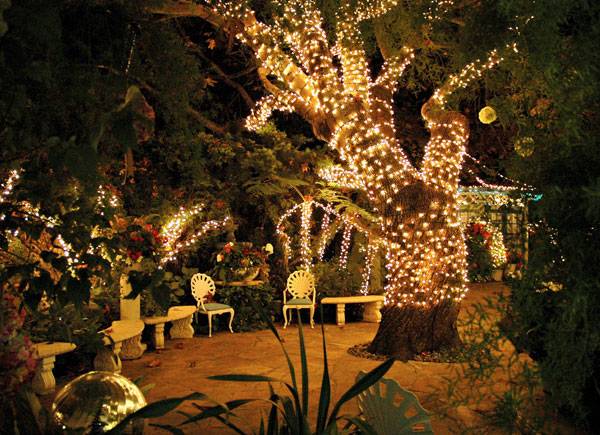
Licensed under CC 2.0. Image by Wonderlane, via Flickr – Source.
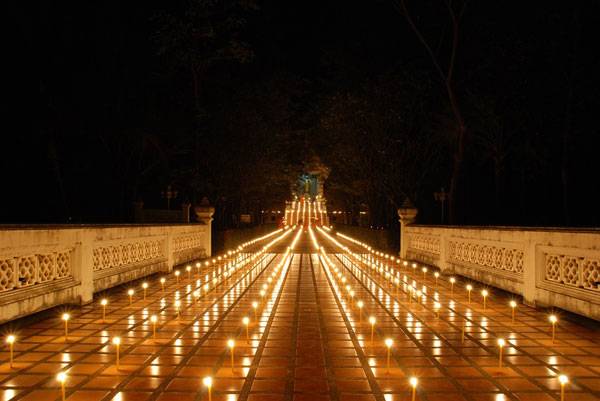
Exterior Lighting Design. Licensed under CC0 Public Domain, image via Pixabay – source.
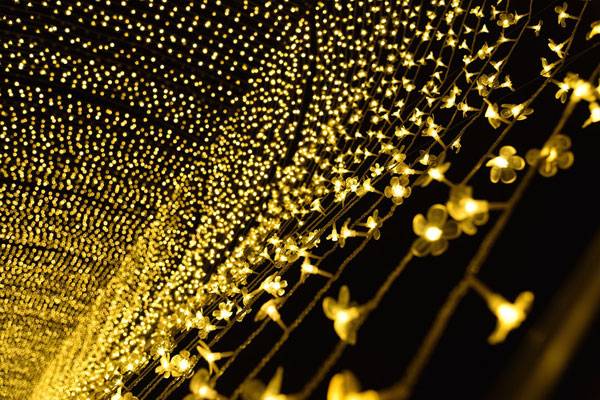
Exterior Lighting Design. Licensed under CC0 Public Domain, image via Pixabay – source.
Remember to use Different Types of Light to Make Your Exterior Appear More Interesting
Good light design uses a mixture of shadows and different levels of lighting. So it is important that there is a good level of contrast in the area. Below is a good example of an outdoor area that has implemented an interesting light design.
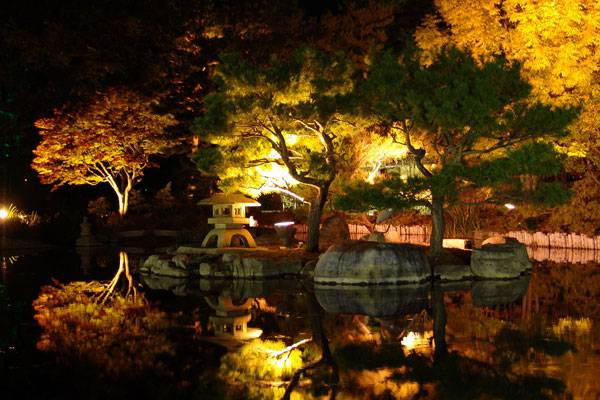
Licensed under CC 2.0. Image by MIKI Yoshihito, via Flickr – Source.
Recommended Reading:
- Becoming an Urban Planner: A Guide to Careers in Planning and Urban Design by Michael Bayer
- Sustainable Urbanism: Urban Design With Nature by Douglas Farrs
- eBooks by Landscape Architects Network
Article by Caitlyn Bell Featured image: Licensed under CC 2.0. Image by Ian D. Keating, via Flickr – Source.
Securing Investments Through Property Upgrade
We explore securing investments through property upgrade and discover how it can help you to achieve more secure living.
A Housing Market In Flux
Since 2008, the financial crisis has forever changed the housing market in the United States. Ripple effects have even reverberated worldwide. Property investiture is becoming risky business, and if you’ve got assets tied up in yours, it makes sense to protect them.
Upgrade Your Premises
There are a number of ways you can increase the value of your property, both inside and outside. Think of it like taking a shower: if you’re going to clean up your insides, it helps to clean up your outside. Consider the lawn, and the state it’s in. If it can be saved, or is in good shape, make sure it looks its best. Keep in mind that whatever you choose will have to be maintained; so you might want to look for easy options. In certain neighborhoods, a basketball court might be a good idea. Depending on size, a hot tub might make even more sense. You could even install a miniature forest with a rock trail going through. This will take years to mature, though; so be prepared to wait.
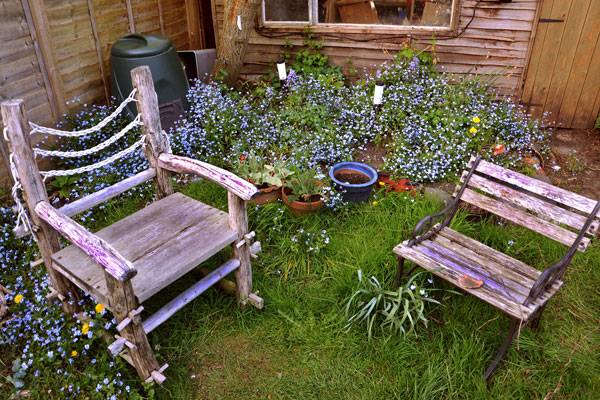
Image credit: CC0 Public Domain. Source.
Onward Toward the Interior
It may make sense for you to approach a realtor about upgrades that will bring in the most value when compared against the cost of installation. Sometimes a kitchen remodel can be done with a lack of relative expense, and will pay for itself (albeit with little profit) on the back-end when you sell the home. Sometimes even the best remodel can’t recoup enough value to make itself worthwhile. One inexpensive measure of increasing value is had in the form of Vinyl. According to Ferma Flooring, vinyl wood plank flooring installation: “replicates the look of a natural product which has natural variations in color and texture.” Appearance can be everything, and it may only take your redoing one or two rooms near the entryway. You should ensure the bathrooms are in good repair as well, and updated as per social expectations. There are new fads in sinks and shower-heads these days, and sustainability options are increasingly popular both for their low-impact on the environment, and their ability to save the user money over time.
A Hybrid Arrangement
Solar panels are kind of a hybrid between the interior and exterior of the house, in that they bring power from the outside to the inside. What’s fun about solar panels is they can actually raise a property’s value substantially, while saving money for their users at the same time. If you pay $100 a month on electrical, you’re paying $1,200 a year. But you can install a solar system for between $3100 and $6200 (at between $1 and $2 per Watt; industrial rates nationally are $.70 a Watt) that will provide you trustworthy power for a sustainable, warrantied ten years. That means you get five years of free energy; or roughly $3,800 to $6,900 in savings, depending on the cost of your panels, and the cost of your utility bill.
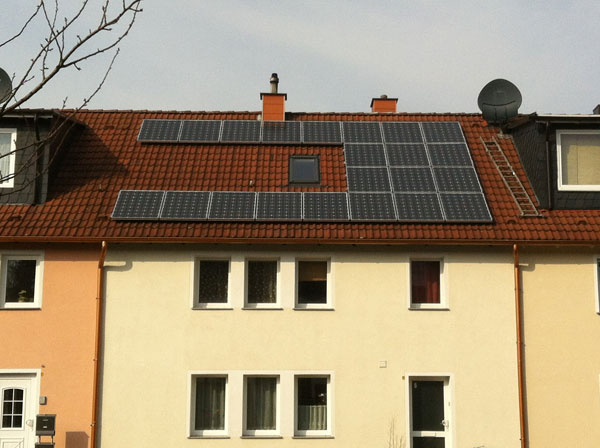
Image credit: CC0 Public Domain. Source.
Exceptional Advantages
Between solar panels, progressive innovations in flooring, and exterior remodeling, you can substantively upgrade your home in a cost-effective way which saves money and increases value over time, representing solid investiture. Author’s Bio Name: Kevin Bennett Title: SEO Marketeer Kevin is an SEO marketeer with OutreachMama and Youth Noise who designs value-rich content aimed at increasing clientele for expanding businesses. Networking, building partnerships, and providing quality products with shareable value make this possible. He’s an author (“Amphibian” and “The Thief and the Sacrifice” to his credit) whose professional writing follows business trends in technology, marketing, SEO application, and much more. Featured image: By Orygun – Own work, CC BY-SA 3.0, source
Become a Pro at Drawing People With These 10 YouTube Videos
Article by Alexis Alvey – We take a look at 10 YouTube tutorials for drawing people so that you can help get your ideas across even better and make them come to life. Drawing people can be quite intimidating for architects and artists alike. Perhaps this is because we are so intimately familiar with the human form, that when it is drawn incorrectly, we can easily see mistakes. However, as landscape architects, we do not need to be anywhere close to perfect at drawing people to effectively convey a message in our designs. Including figures in our hand renderings and concept drawings is key to communicating appropriate scale and how a space may be utilized. Drawing people can also convey your personal style and can be a form of self-expression. By following these YouTube videos, you will see that drawing people doesn’t have to be difficult when the process is broken down into manageable steps.
10. How to Draw People / Drawing Tutorials – Howcast
This video starts off by introducing you to the basic proportions of the human figure. The complex human body is broken down into its component shapes by using a wooden mannequin. If you can draw a stick figure, you can draw a proportionate mannequin! The narrator reminds the viewer that any form of drawing should always be an enjoyable experience! WATCH >>> How to Draw People | Drawing Tutorials
9. How to Sketch & Draw People Part 1 / How to Use a Mannequin – Alphonso Dunn If you want another viewpoint on drawing with a mannequin, check out this clip. Understanding how the shapes of the human body function three-dimensionally is key. The narrator dishes out a lot of wisdom about drawing in all of his videos, and this one is no exception! WATCH >>> How to sketch & draw people Part 1 | How to use a mannequin
8. Perspective Art Lesson – How to Draw People in Perspective – Stick Figure Drawing In Perspective – My Drawing Tutorials
In addition to understanding the basic proportions of the human figure, the principles of perspective are just as important in creating life-like drawings. This video focuses on the basic elements of perspective and shows how they can be used in drawing stick figures. After following along with this video, you will have created the best stick figure crowd you have ever drawn! WATCH >>> Perspective Art Lesson – How To Draw People In Perspective – Stick Figure Drawing In Perspective
7. How to Draw People in Perspective – Circle Line Art School Once you have mastered human proportions and perspective, follow along with this video where both of those key elements are combined. The narrator is quite a good artist and the rendering that he creates in the end is something that we can all aspire to. If you get frustrated, review the videos listed above, and remember that your drawings are guaranteed to improve with practice! WATCH >>> How to Draw People in Perspective
6. Human Figures for Architectural Sketches Part 1 – Architecture Daily Sketches – Themodmin If you want some drawing tips direct from an architect, check out this video. The narrator makes the important distinction between drawing detailed figures and drawing super-simplified figures, which he calls ‘perfume bottle people’. Each has an important place in architectural drawings. WATCH >>> Human Figures For Architectural Sketches Part1 – Architecture Daily Sketches
5. Human Figures for Architectural Sketches Part 2 – Architecture Daily Sketches – Themodmin
If you enjoyed Part 1 of this series, continue on to Part 2. The narrator suggests that having a visual stock of key poses, such as walking down the stairs, and learning how to draw these poses in both male and female form will really help you improve your renderings. The awesome soundtrack to this video will help keep your pencil and pen moving quickly across the page! WATCH >>> Human Figures For Architectural Sketches Part 2 – Architecture Daily Sketches
4. How to Sketch & Draw People Part 2 / Gesture Drawing – Alphonso Dunn
This video introduces the concept of gesture drawing, which is also the topic of the next three videos. This approach to drawing human figures will add life and movement to your people. As in his Part 1 video, the narrator of this video takes a lot of time to explain the concepts and delivers unique and highly understandable instructions to any viewer who truly wants to improve his or her figure drawings. WATCH >>> How to sketch & draw people Part 2 | Gesture Drawing
3. How to Draw Gesture – Proko
The narrator of this video is quite personable, and offers another viewpoint on the subject of gesture drawing. Feel free to exaggerate a pose in order to better communicate a feeling in your drawings. Also, as an FYI, this video and the next two videos have images of unclothed individuals, which is the best way to really see the contours of the human figure. WATCH >>> How to Draw Gesture
2. How to Draw Gesture – Step by Step – Proko
If you thought the previous video was helpful, watch this step-by-step video which demonstrates how gesture can be applied to your drawings. Be sure to practice and follow along as the narrator creates quick, thirty-second to two-minute gesture drawings. Time will never pass so quickly! If you need to pause the video in order to finish your drawing, I won’t tell anyone! WATCH >>> How to Draw Gesture – Step by Step
1. Gesture Drawing! – Cubebrush
The final video is also on gesture drawing but shows how you can do it digitally. In this video, the narrator demonstrates how he creates some impressive timed drawings in Photoshop. If you’re a tech enthusiast, the app GestureDrawing!, which he uses, is a must. It is an inexpensive app that you can use with Photoshop and it can be downloaded for Windows or Mac here: https://cbr.sh/xkbbn WATCH >>> GESTURE DRAWING!
After watching these ten YouTube videos, you will see that the three key steps to creating expertly drawn people are:
1) understanding the proportions of the human figure, 2) understanding the basic principles of perspective, and 3) applying these to the concept of gesture drawing. Do you think your drawings have improved after watching these clips? Do you have any suggestions for others who want to improve their people-drawing skills? Feel free to share your experience in the section below!
Recommended Reading:
- Drawing for the Absolute Beginner: A Clear & Easy Guide to Successful Drawing (Art for the Absolute Beginner) by Mark Willenbrink
- You Can Draw in 30 Days: The Fun, Easy Way to Learn to Draw in One Month or Less by Mark Kistler
Article by Alexis Alvey Featured image: Print screen from YouTube video, source.
Storaa Stream Goes From Neglected Space to Vibrant City Place
Article by Andrea Robezzati – A review of Holstebro Storaa Stream, OKRA Landschapsarchitecten, located in Holstebro, Denmark. Finnish architect Eliel Saarinen once said, “Always design a thing by considering it in its next larger context; a chair in a room, a room in a house, a house in an environment, an environment in a city plan”. That first small change can lead to a ripple effect in an ever-growing pool. In the small Danish city of Holstebro, a competition to create a dance theater became an opportunity to redefine all of the surrounding public space. The Dutch architectural firm OKRA won the competition in 2006, and in just a few years they managed to transform this part of the city from a neglected space into a catalyst of change for future development. Let’s learn how this was possible!
Storaa Stream
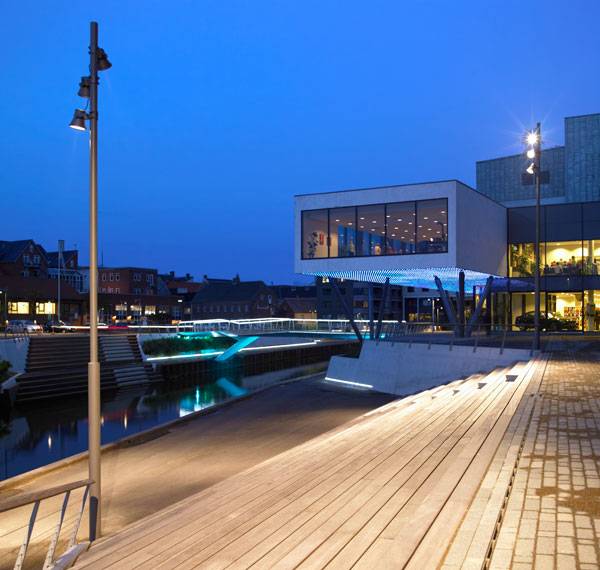
Holstebro Storaa Stream. Photo credit: Helene Hoyer
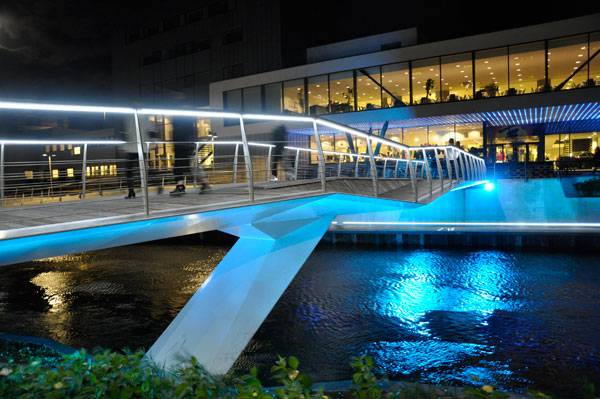
Holstebro Storaa Stream. Photo courtesy of OKRA Landschapsarchitecten
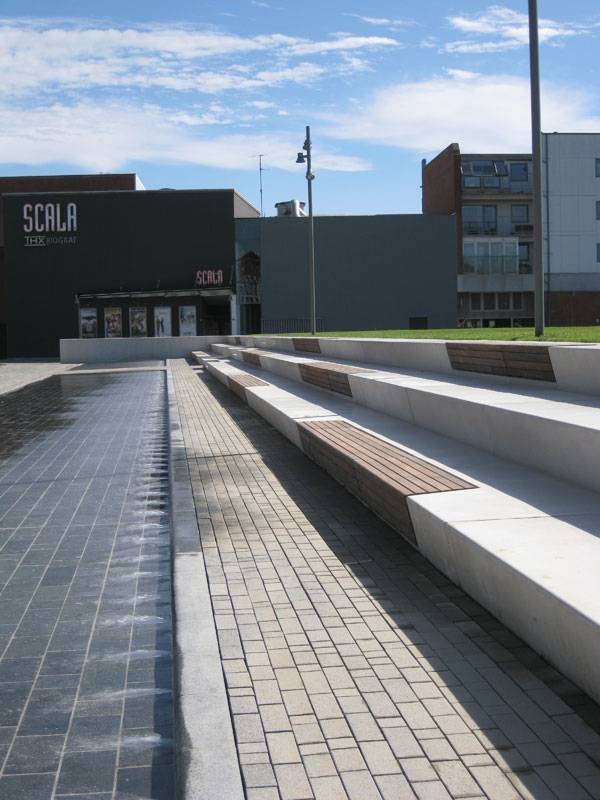
Holstebro Storaa Stream. Photo courtesy of OKRA Landschapsarchitecten
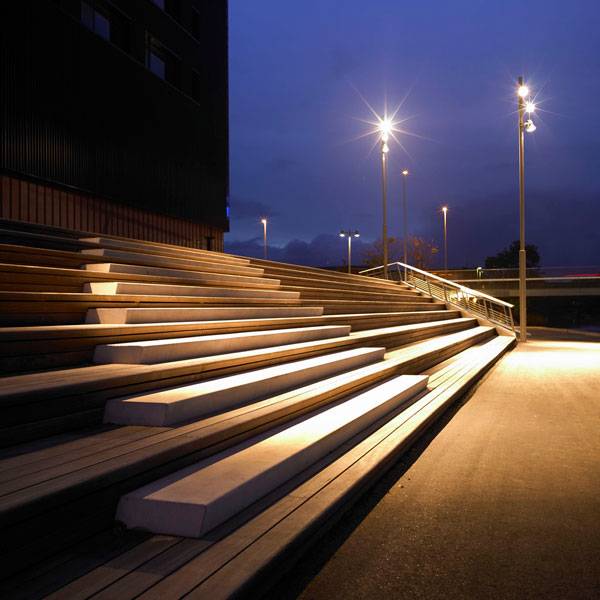
Holstebro Storaa Stream. Photo courtesy of OKRA Landschapsarchitecten
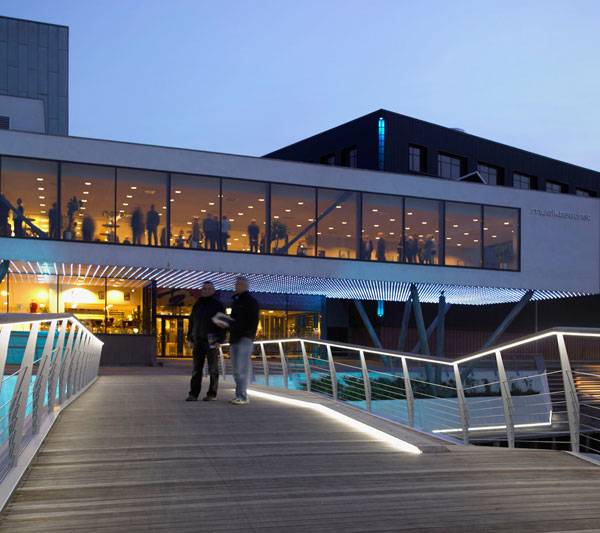
Holstebro Storaa Stream. Photo courtesy of OKRA Landschapsarchitecten
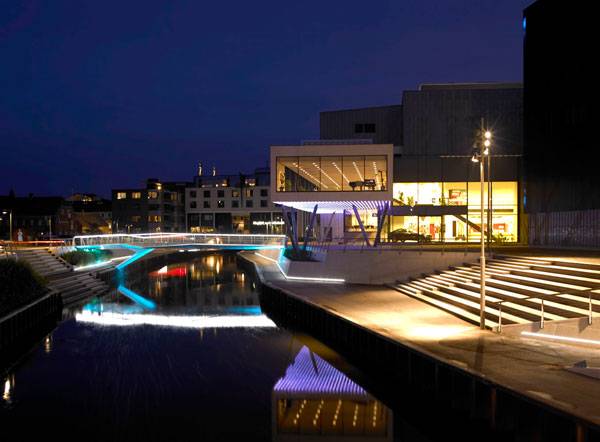
Holstebro Storaa Stream. Photo courtesy of OKRA Landschapsarchitecten
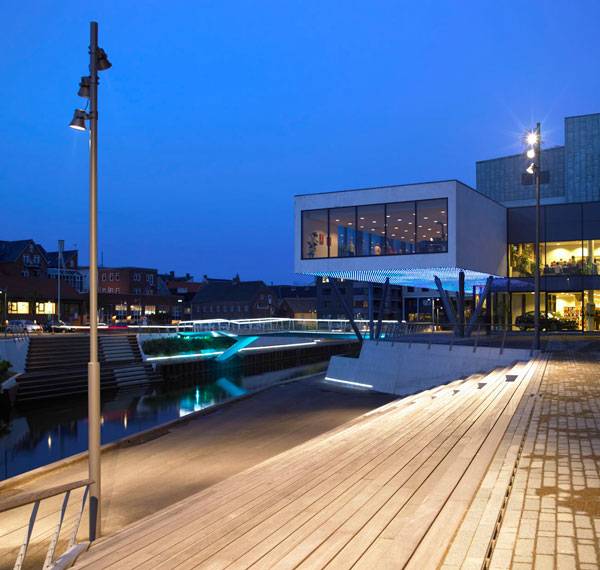
Holstebro Storaa Stream. Photo courtesy of OKRA Landschapsarchitecten
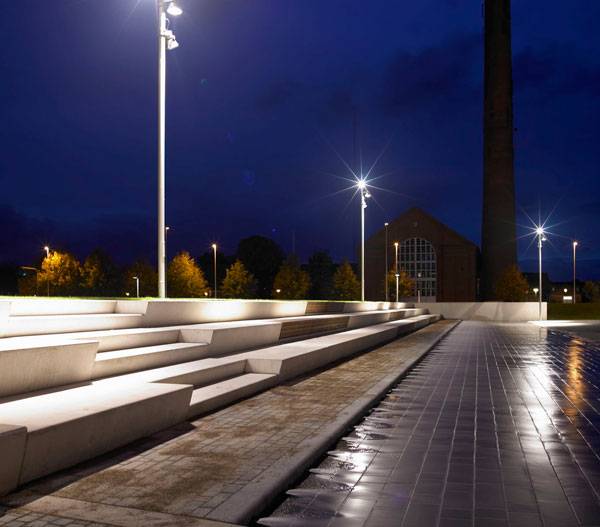
Holstebro Storaa Stream. Photo courtesy of OKRA Landschapsarchitecten
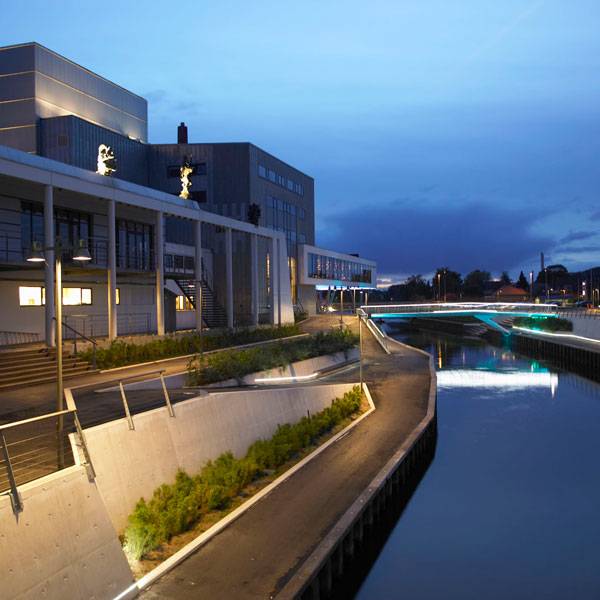
Holstebro Storaa Stream. Photo courtesy of OKRA Landschapsarchitecten
The Power of a Single Piece
This project is a clear example how a single building – just one piece — can change the meaning of an entire neighborhood and, by extension, an entire city. Every single project is always part of something bigger, and it always establishes a new relationship with its surroundings. Again, we discover how landscape architecture is one important key for achieving a successful design for the cities of tomorrow. As OKRA has shown with this project, the goal is not just to respond to one question, but to trigger a process and have a larger vision, with the common goal of creating better cities. Are you ready to be part of this process?
Full Project Credits For Holstebro Storaa Stream :
Project: Holstebro Storaa Stream Location: Holstebro, Denmark Designer: OKRA Landschapsarchitecten Collaboration: Schul Landskabarkitekten, Asa Frankenberg Client: Municipality Holstebro Competition: 2006, 1st prize Timescale: 2007-2009 Project Area: 2.3 hectares Budget: Euro 5,0 mil. (excl. VAT) price level 2006 Recommended Reading:
- Becoming an Urban Planner: A Guide to Careers in Planning and Urban Design by Michael Bayer
- Sustainable Urbanism: Urban Design With Nature by Douglas Farrs
- eBooks by Landscape Architects Network
Article by Selen ÖZTÜRK
The World’s First Rose Museum Hits China
Article by Selen ÖZTÜRK – A review of the World’s First Rose Museum by NEXT Architects in Daxing District, Beijing, China. In this museum, everything is coming up roses – literally. The world’s first rose museum opened on May 23, 2016, in Beijing, China, in conjunction with the 2016 World Federation of Rose Societies Convention. The convention is an international platform at which the host country and host city present their regional brands to visitors and federation members from other countries. The rose museum is a great place for visitors to enjoy art installations about flowers and learn historical theories about ancient roses. The project designers from NEXT Architects have successfully combined the history of China, Chinese culture, and modernity in a bouquet of roses.
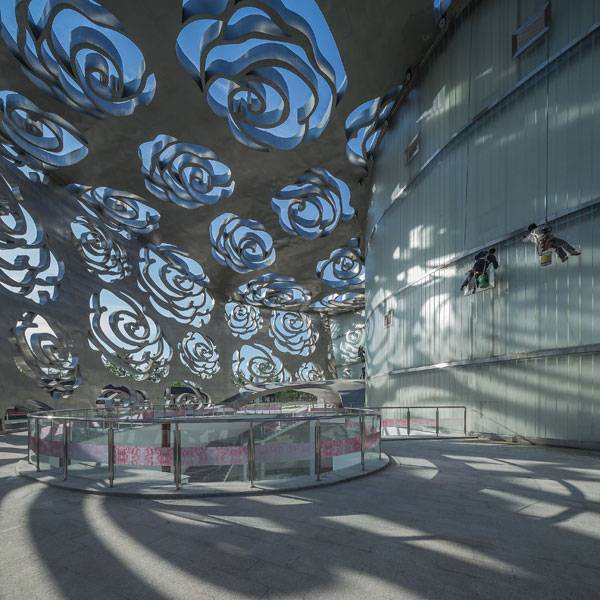
World’s First Rose Museum. Photo credit: Xiao Kaixiong
World’s First Rose Museum
Flowers in Chinese Culture
Flowers aren’t just flowers in China. They are part of the culture. Different flowers hold different meanings, and people communicate with one another by expressing their feelings through the cultural attributes of specific flowers. As we look into the culture in a deeper way, we can clearly distinguish the importance of flowers in people’s daily lives.
A Rosy History
Roses are one of China’s traditional flowers. They generally represent love, friendship, peace, eternal spring, and perpetuity. Due to the fact that roses originated in China, there are many ancient and precious rosaceae fossil remains. China has a long rose-breeding history that can be traced back to the early West Han Dynasty, about 2,000 years ago.

World’s First Rose Museum. Photo credit: Xiao Kaixiong
A Bouquet of Beauty
NEXT Architects designed the museum to look like a bouquet of roses. At first sight, the building looks like paper-cut patterns of Chinese roses. The soft stainless steel used to create spaces for the exhibition wraps around an area of 30,000 square meters and climbs 17 meters high. When you enter the building, the folded structure of the museum pulls you inside. “The rose museum aims to create a new architecture for China, in which history and modernity, art and architecture blend,” explains NEXT Architects’ China partner, Jiang Xiaofei.
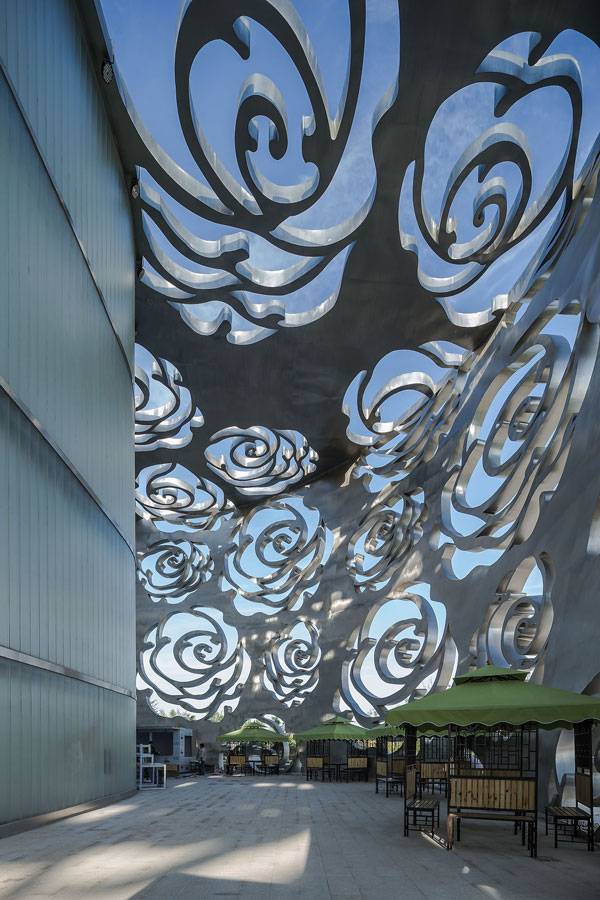
World’s First Rose Museum. Photo credit: Xiao Kaixiong
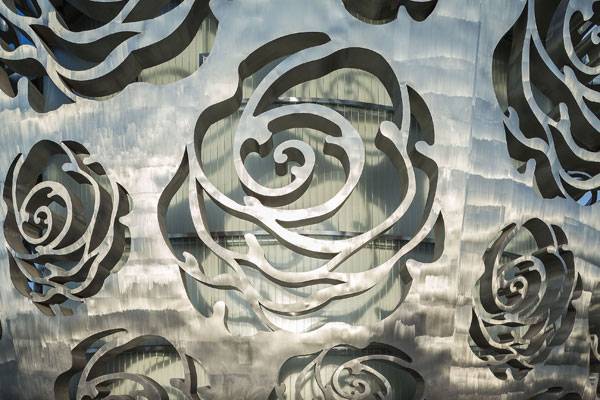
World’s First Rose Museum. Photo credit: Xiao Kaixiong
Linking History and Modernity
John Van de Water, partner at NEXT Architects, says “the main challenge with the rose museum was to find a modern Chinese identity for a building (whose) significance is so deeply rooted into Chinese culture.” The architects blended history and modernity by using walled courtyards in their design. A detached façade creates four walled-off courtyards between the façade and the museum itself. According to Chinese culture, such courtyards create the perfect balance among man, house, and nature. By using semi-transparent stainless steel walls, the architects blurred the boundaries between indoor and outdoor landscapes. Both in daylight and at night, Chinese rose paper-cut patterns create spectacular shadows.
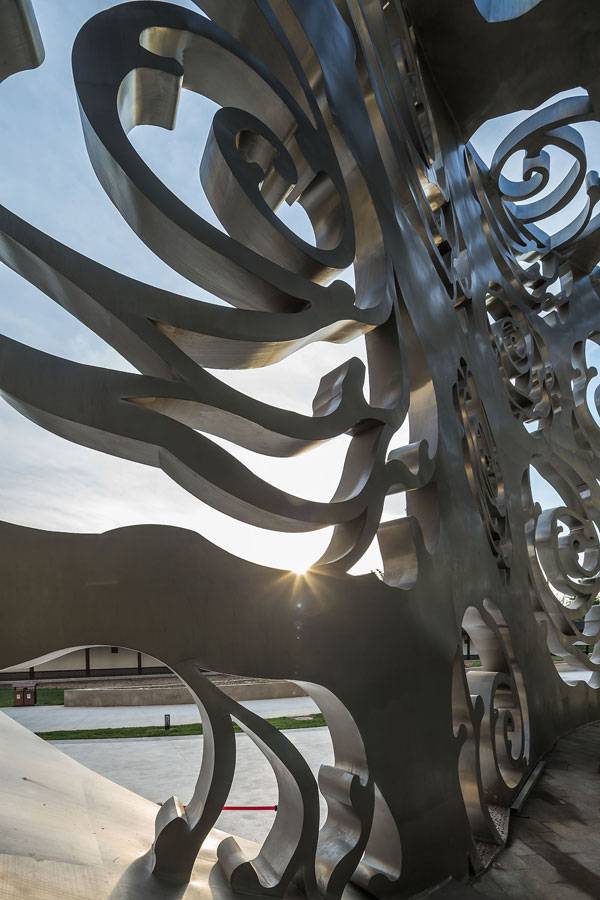
World’s First Rose Museum. Photo credit: Xiao Kaixiong
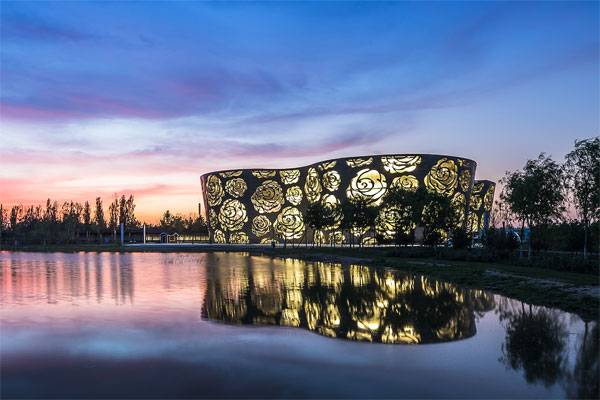
World’s First Rose Museum. Photo credit: Xiao Kaixiong
Full Project Credits For World’s First Rose Museum :
Project: World’s First Rose Museum Architect: NEXT Architects Location: Daxing District, Beijing, China Completion: 2016 Photographer: Xiao Kaixiong Client: Beijing Tianheng Building Design Consulting Co., Ltd. Recommended Reading:
- Becoming an Urban Planner: A Guide to Careers in Planning and Urban Design by Michael Bayer
- Sustainable Urbanism: Urban Design With Nature by Douglas Farrs
- eBooks by Landscape Architects Network
Article by Selen ÖZTÜRK
How an Art Installation Can Spark Real Discussions on Climate Change and Incite Action
Article by Emily Sinclair – Green Air, by Nomad studio, located in the Contemporary Art Museum of Saint Louis. Plants are key indicators in an ever-changing world. Plants and the ecosystems they inhabit are accustomed to working out problems within their own means. But as our human population grows, the strain on these environmental resources also grows – to a point in which the ecosystems are struggling to deal with all the pressures and pollution internally. Many landscape architects and landscape architecture firms are concerned with maintaining or returning the balance to these ecosystems. Nomad Studio of New York City is one of them. Its latest project, Green Air, showcases this dialogue well. Green Air was recently on display at the Contemporary Art Museum of St. Louis (CAM).
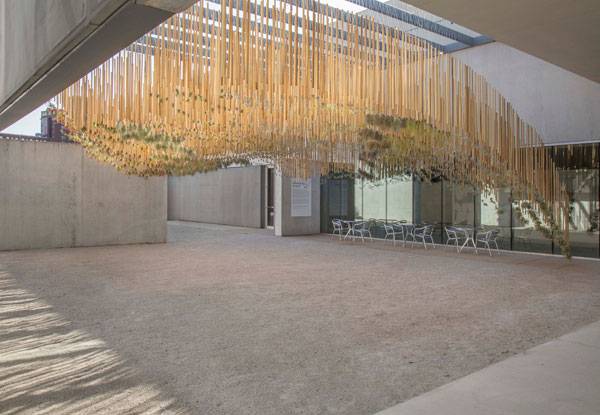
Green Air. Photo credit: Alise O’Brien
Green Air
Before delving into Green Air though, I would like to introduce you to another project by Nomad. This project, named Green Varnish, was a structure comprised of a wooden frame and plants placed close together, creating a green carpet that seemingly floated in the middle of the courtyard at CAM. Despite its immense occupation of the middle of the courtyard, it sat in the background, like a ghost. Its presence was one of quiet desperation, paired with the words “We live in denial within vanishing landscapes.” It depicts the struggle our strained landscape feels as we ignore or mismanage the problems associated with climate change and an increasingly global world. It’s important to first describe this project, as Green Air was installed as Part Two of this show.
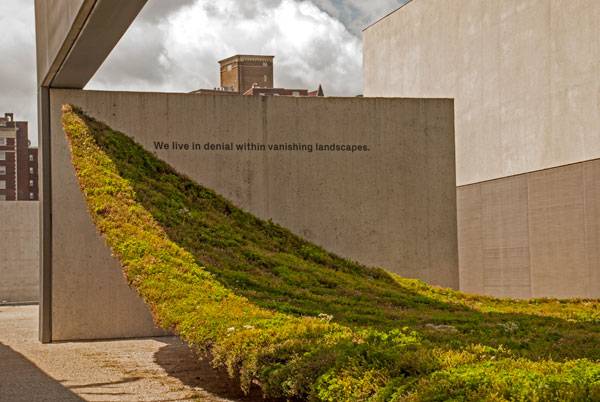
Green Varnish. Photo credit: Sarah Rothberg
How to Put it Into Words
As a single installation, Green Air can be described as ethereal and mesmerizing. The gallery’s website describes the work as being comprised of “four-foot-long poplar sticks hung at varying heights, moving together in the wind and functioning as a monumental aerial garden.”
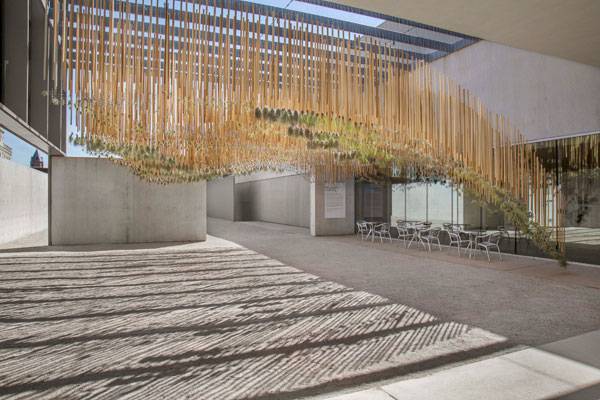
Green Air. Photo credit: Alise O’Brien
In describing the installation’s impression on the space, the gallery description goes on to say, “The installation transforms the surrounding gray concrete and glass environment into a natural and organic setting. Surviving on light and air alone, the Tillandsia function as a bio-indicator, speaking to the pollution pervasive in a man-made environment. Nested within the courtyard, this immersive hanging garden surrounds the visitors with unexpected beauty in a surprising location.”
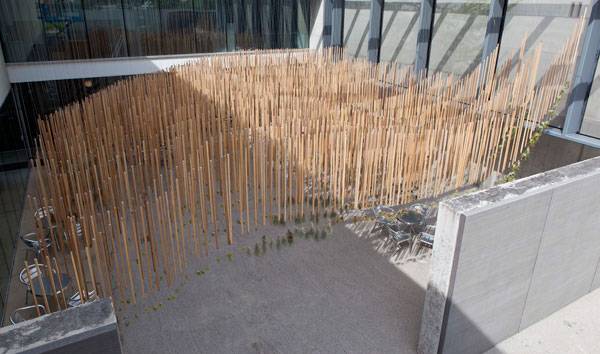
Green Air. Photo credit: David Johnson
Landscapes and our Fortune
As a stand-alone installation, Green Air makes a strong statement about how the landscapes surrounding us can be fortune tellers. The effects of our pollution show up in these environments long before they are reflected in our daily lives. Let’s turn back to the relationship to Green Varnish. For as strong a statement that Green Air makes alone, Nomad reminds us that the two together create “a dialogue in form, material, time, and space”. Green Air has all of the pieces of Green Varnish, reused and repurposed; it occupies the space once left empty by Green Varnish.
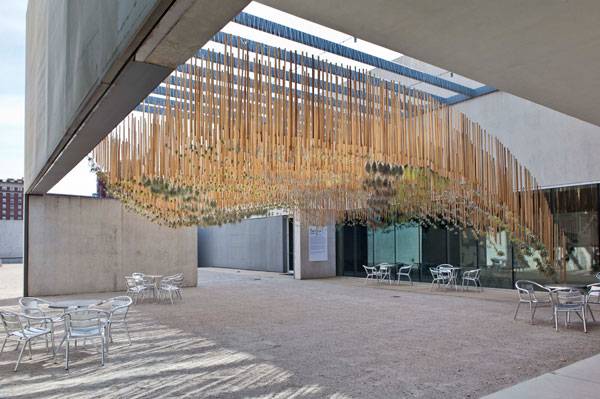
Green Air. Photo credit: David Johnson
Trailing Plant Used Throughout
Wood slivers, previously from the frame, hang from the courtyard’s steel canopy. Tillandsia plants are suspended from the ends, creating a new carpet, one that drapes over the people in the courtyard, rather than alongside them. Green Air exposes the potential of the space Green Varnish once occupied, and this revealed space is well used by museum attendees, as they lounge under the plants in the air at little bistro tables. This kinetic sculpture moves with the wind, tillandsia and wooden sticks moving gently, creating a shifting shadow on the floor of the courtyard. As it shifts, it becomes a soothing, peaceful show to watch as it undulates in the space above everyone’s heads.
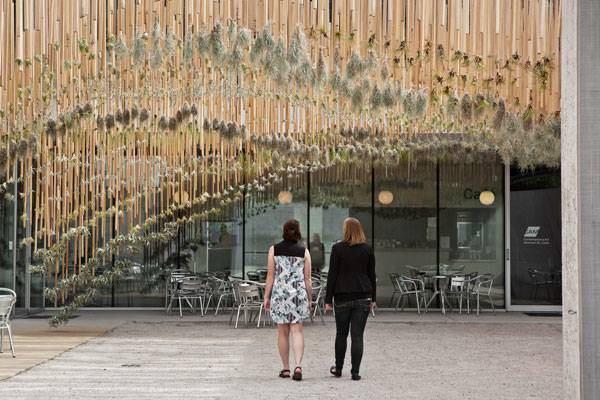
Green Air. Photo credit: David Johnson
The Results of Two Installations
Together, these two installations built a two-act play, commentating on how common it has become to live in denial as our landscapes struggle. While Green Varnish covered and hid, Green Air exposes. Where Green Varnish was is now revealed in the negative space underneath the many dangling Tillandsia. It is exactly this, though, that brings home the point that Nomad seems to be making: That landscapes are forced to change and, as a collective, people are comfortable with ignoring the possible ramifications of this and instead choose to only react to the changes, whether they be good or bad.
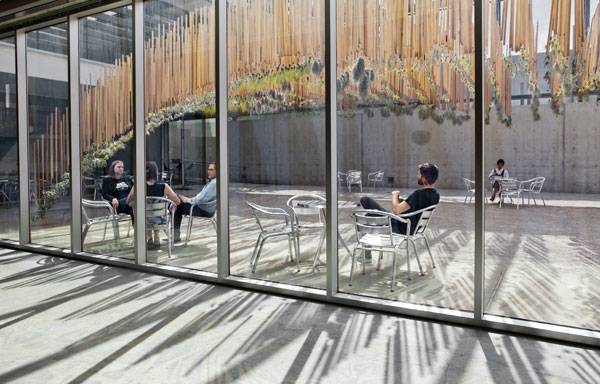
Green Air. Photo credit: David Johnson
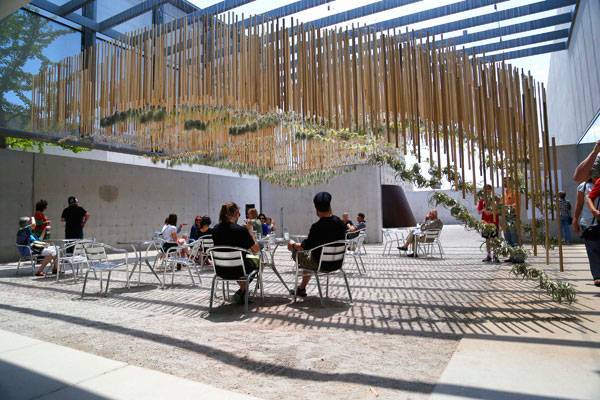
Green Air. Photo credit: Sarah Rothberg
Full Project Credits For Green Air :
Project: Green Air Location: Contemporary Art Museum of Saint Louis (CAM). Landscape Architects: Nomad Studio. Date of Construction: Summer 2016 Size: 200 square meters Consultants: LIA Engineering. Installation Team Jessi Cerutti & Caleb Hauck. Molly Brennan, David Burnett, Key Chen, Ryan Doyle, Zac Farmer, Joshua Gann, Matthew Hannon, Emily Keefauver, Eric Kobal, Marianne Laury, Chris Lucas, Eric Repice, Adrienne Sandusky, Bret Schneider, Margot Shafran, Laura Schatzman, Jonathan Watt, Jamie Wiechens, Bin Yang, Eileen Zhang. Maintenance Team: St. Louis Master Gardeners. Credits: All graphics courtesy of Nomad Studio and credited to their photographers, including a copyright in front of their names. Recommended Reading:
- Becoming an Urban Planner: A Guide to Careers in Planning and Urban Design by Michael Bayer
- Sustainable Urbanism: Urban Design With Nature by Douglas Farrs
- eBooks by Landscape Architects Network
Article by Emily Sinclair
The Many Benefits of Urban Agriculture
In this article, we take a look at the urban scene and look at the many benefits of urban agriculture. While urban agriculture has enjoyed a recent surge, it is nothing new. Ancient societies, such as Egypt and Machu Picchu, had systems in place to recycle water and waste to use on their vegetable plots. Fast forward a few millennium, and you’ll see the allotment gardens of 19th century Germany, which provided space for citizens to produce their own food. In the 20th century, residents of the United States, the United Kingdom, and Canada established victory gardens to help relieve the stressors on the agriculture industry during World Wars I and II. Considering the long history of urban agriculture, having the freedom to produce fruit, vegetables, eggs, milk, and even meat for one’s family seems like a rare privilege today. However, a worthy goal of any city is to not only allow, but encourage, its citizens to grow as much of their own food as possible. The benefits are seemingly endless, and the drawbacks are few. Read on for a look at what makes sustenance in the city so great.
Benefits of Urban Agriculture
Food Security for All Neighborhoods
According to the Community Food Source Coalition, food security is defined as – all persons in a community having access to culturally acceptable, nutritionally adequate food through local, non-emergency sources at all times. This means that families and individuals in every neighborhood of the urban area should have good, healthy, fresh, and appealing food available to them year-round. Some inner-city areas have nothing more than a mini-mart to shop at, which makes it difficult for some residents to source fresh produce. With the implementation of small-scale urban farming, even those who live in underserved areas can grow their own food, either individually or as part of a group. By teaching residents to garden in any available space, such as the front stoop, the roof, or a windowsill, they can consume and enjoy a variety of nutrients. Eventually, a successful program can lead to a healthier population.
Social Benefits
There’s no doubt that farming is fun. Ask any kid who is growing up on a family farm, and you’ll learn that nothing beats a life that is in tune with the weather, the soil, and the animals who contribute to the harvest. While it may not be reasonable to create a full-scale farm in the city, even the tiniest agricultural operation can yield huge amounts of joy. When the efforts are communal in nature, the joy is spread equally among those who helped create it. In addition to working together to plant and harvest, opportunities for social benefits occur if the harvest is taken to a local farmer’s market or other venue for exchange of harvest. In some cities, it may make sense for individuals to barter their produce for someone else’s. For example, a family that grew a bumper crop of salad greens may like to trade some of them for a dozen eggs produced by another family. In this way, healthy relationships can be formed.
Physical Benefits
If you’ve ever gardened before, you probably know what a good workout it can be. Gardening in the city is limited to the use of hand tools instead of tractors, causing urban producers to become very well acquainted with hoes, rakes, and trowels. The seemingly-simple tasks of turning the soil, adding mulch or compost, and forming rows or beds can burn an astonishing amount of calories while building muscle. Add in the tasks of planting, watering, weeding, and harvesting, and you have a bona fide exercise routine that any boot-camp warrior would approve of. In addition to the effort required to grow food, the consumption of said food is very healthy. Some people, even adults, are wary about trying new vegetables. However, if those same people have a hand in growing the greens, they are more inclined to consume them. Having fresh food on hand, literally growing right outside one’s door, makes families more likely to meet the daily recommended intake of 5 servings of fruits and vegetables. When coupled with extra doses of fresh air and sunshine, urban residents who garden can trend toward a healthier lifestyle.
Environmental Benefits
Food that is grown close to home has a greatly-reduced carbon footprint compared to that which is grown a continent away or more. Food that is grown at home leaves an even smaller footprint on the environment. For this reason and others, progressive cities are encouraging urban agriculture among their residents, non-profit entities, and even corporations. Jai Shroff, who believes in doing things better, is a leader in the area of sustainable agriculture. Plants are natural contributors to a healthy ecosystem. When planted on a rooftop, they shield the building from noise pollution as well as excess heat and cold. When planted in previously-polluted soil, they clean it up, which can lead to soil that is healthy enough to produce food crops in the future. The benefits of urban agriculture are many, and can be enjoyed in virtually any climate worldwide. Whether your city is in the developing world or the developed one, encouraging the production of food by the residents of it is a healthy plan that can have long-term benefits. Recommended Reading:
- Becoming an Urban Planner: A Guide to Careers in Planning and Urban Design by Michael Bayer
- Sustainable Urbanism: Urban Design With Nature by Douglas Farrs
- eBooks by Landscape Architects Network
Article by Bilal Sajjad Featured image: By Linda from Chicago, USA – New crops, CC BY 2.0, source
Top 4 Benefits of Ductless HVAC Systems
Have you ever wondered what the benefits of ductless HVAC systems are? Wonder no more. In this article, we discuss exactly just that! The technological advances in HVAC have made the ductless system the most preferred choice for new homes and office buildings. The ductless system comprises of an outside condenser or compressor and an indoor air handler. As they are small in size they are much quieter than the traditional HVAC systems. The ductless systems are truly versatile and this can enable you to easily cool and heat areas that are usually hard to reach. You may be able to choose different temperature zones in each room. It means that each zone is customized to meet the expectations of the occupant. This is one of the reasons why they have become a popular choice not just in new homes but in old ones too.
Ductless HVAC Systems
1. Flexible Solutions
The traditional air conditioning systems forced hot and cool air through ducts whereas the new ductless systems deliver air directly to different zones of the room. They usually comprise of one or more indoor units and an outdoor unit. All that is required is access to electricity and mounting capabilities. The ductless systems are also referred to as multi-split, split and split ductless systems and are a cost-effective way to replace the old inefficient air conditioning systems. They can be easily installed in new homes, apartments, and condominiums with the ability to control the temperature in different rooms. They are ideal for cooling and heating small rooms.
2. Save Money
One of the biggest benefits of switching to a ductless system is cost savings. When you have an inefficient air conditioning system the energy bills may shoot through the roof. The ductless systems consume less power compared to the traditional air conditioners. The ductless systems do not have ducts, so you may be able to avoid the energy loss that is normally associated with ductworks. The air that is temperature controlled is delivered directly to the room, resulting in more efficiency. The homeowners may be able to create zones in their homes with this multi-split unit. This means that rooms that are not occupied do not have to be cooled or heated up. In addition to saving money on the energy bill, homeowners installing the ductless systems are also eligible for utility rebates and tax credits. Many programs have been announced at the local, state and federal levels that allow homeowners to take advantage of the savings.
3. Lowers Carbon Footprint
The ductless cooling system is small and its zone capability feature enables greater energy efficiency. These systems follow energy star guidelines and this makes them more energy efficient than the minimum standards that have been set forth by the government. The improved efficiency not just saves money but also reduces the total carbon output. They have less impact on the environment and are considered environmental friendly. The quality of air is improved when you install a ductless system. The multi-stage filtration can help reduce allergens, bacteria, dust, pollen and other particles in the air. The filters can be easily cleaned and reused and this helps generate less waste. 4. Quick and Easy to Install Installing a traditional air conditioning system may take days and sometimes weeks and may disrupt all activities at home. The ductless systems are easy to install and depending on the number of indoor and outdoor units that need to be installed the entire installation process can be completed in a day. The ductless systems run on small pipes. A small three-inch hole is required to install these pipes. This means that the homeowners do not have to worry about rebuilding walls and ceilings around the ductwork. When choosing a ductless system, it is important that you choose the right size for the room or area. If you choose a wrong size, you may not be able to get the benefits. If you are unsure about choosing the right size, you can contact a reputed HVAC contractor so that you are guided properly and choose a size that is ideal for your new home. The best HVAC techs in TN are in Nashville and you can avail their services to install ductless systems in your new homes and office buildings. It is important to find qualified installers who have the necessary skills and expertise to install these units. Recommended Reading:
- Becoming an Urban Planner: A Guide to Careers in Planning and Urban Design by Michael Bayer
- Sustainable Urbanism: Urban Design With Nature by Douglas Farrs
- eBooks by Landscape Architects Network
Article by Bilal Sajjad Featured image: Free for reuse via Unsplash, licensed under CC 0.0 source
Best Rooftop Kitchens and Terraces
We take a deeper look at the best rooftop kitchens and terraces to help you get the most out of this otherwise wasted space. If you are lucky enough to have a beautiful rooftop, you may wonder how you can best utilize and design it so it ends up being a fabulous space you can enjoy. Two of the best ways to use this space are rooftop kitchens and terraces because these spaces add additional entertaining space to your home and take advantage of the gorgeous view.
Rooftop Kitchens and Terraces
Here are some amazing rooftop spaces to get you inspired and help you create your own at home:
The Terrace Fit for a New York Penthouse
This terrace is meticulously styled and is something dreams are made of. The deck has wood planking that invites you out onto the main terrace from the living room. Plenty of trees await, from pine and boxwood to fir and juniper. These evergreen trees look amazing all year long. For a pop of color, the couple used climbing hydrangeas on the main deck and flowers such as white begonias on the smaller terrace that meets the kitchen. The smaller terrace has terracotta pavers to add some warmth to the space and many different hearty plants that will continue to look beautiful for years to come. All in all, it’s a beautiful space for relaxing in the sun, dining, and just enjoying good company.
A Wild Retreat in Belgium
This rooftop garden was designed to mimic the wild beauty of nature. The plants are grown just enough to give it that overgrown, natural feel without making the space unusable. Wood planks are used for the small patio-like deck and as stepping stones. The beautiful green plants are the perfect contrast against the red, orange, and brown shades of brick and rooftop surrounding the space. As far as furniture, it’s minimal, with two patio chairs placed on the deck, inviting you to sit and enjoy the weather.
The Modern Rooftop Kitchen
This modern rooftop kitchen features a container garden, a full size grill, sinks, and a cooler with a good amount of counter space for prepping food. The container garden is full of bright purple flowers, which contrast well against the wood decking, but it could be full of herbs for cooking to add a useful touch as well. The kitchen area is well-lit so the space can be used and enjoyed even at night. This space focuses more on making the rooftop additional living and entertaining space rather than just a garden area. The rooftop is intimate enough for two to enjoy and large enough for hosting a party as well.
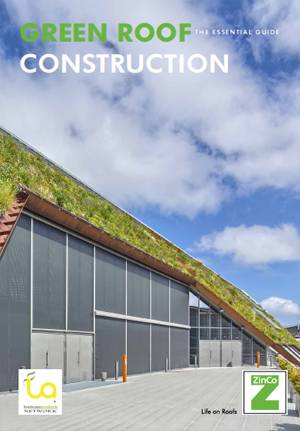
Get Green Roof Construction: The Essential Guide, by signing up to our VIP Club HERE!
The Urban Kitchen and Living Area on the Rooftop
This contemporary space brings together rooftop living in an urban world where rooftop views are appreciated. The space uses glass walls so the owners can enjoy the urban views that they love as well as some awesome glass skylights that provide light and ambience to the rooms below. The generous kitchen space features a full size grill and bar height eating area on a lower patio that sits a step below the living space. The living space has enough seating for a small party, which makes it great for entertaining. You already have the amazing rooftop space, so now it’s just up to you to make it a beautiful terrace and kitchen that you and your guests can enjoy. Start with a design theme (modern, traditional, etc.) and create your space from there, incorporating all of the elements that you’d like to see on your rooftop from seating and dining to gardens and patios. The options are endless, so get in there and start designing your space. Recommended Reading:
- Becoming an Urban Planner: A Guide to Careers in Planning and Urban Design by Michael Bayer
- Sustainable Urbanism: Urban Design With Nature by Douglas Farrs
- eBooks by Landscape Architects Network
Article by Brooklyn Williams Featured image: CC BY-SA 3.0, source



